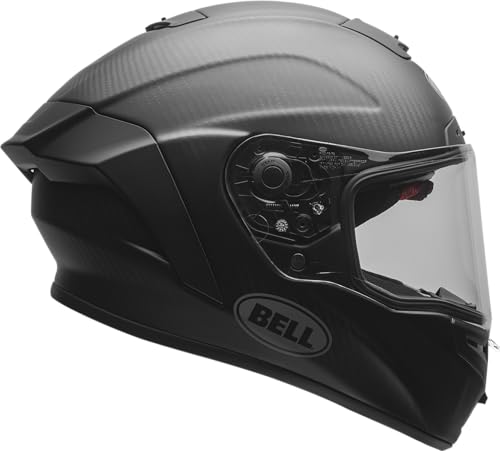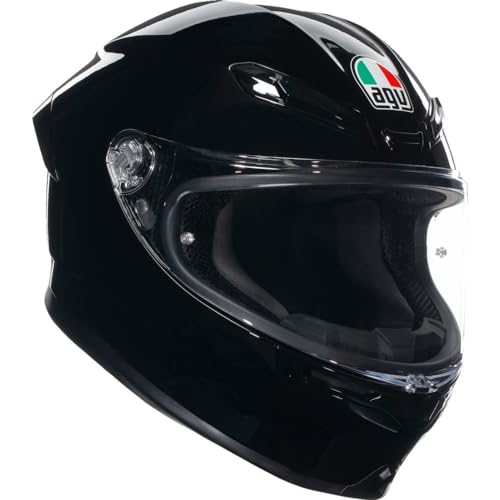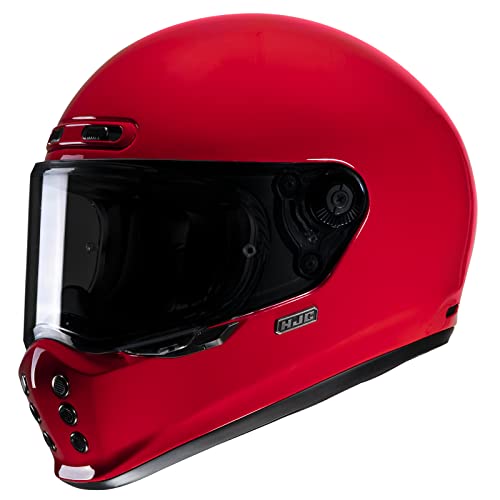Best Motorcycle Helmets Today
As an Amazon Associate I earn from qualifying purchases. Some links may earn us a commission at no extra cost to you.
How I researched
-
I focused on current models with strong third-party safety approvals (Snell M2020 and/or ECE 22.06), checked manufacturer specs for ventilation/weight/shield systems, and prioritized real rider benefits like noise control, optics, and fit range over flashy add-ons. I also considered availability for US riders and whether a helmet line offers multiple shell sizes for better fit scaling.
Top picks
1. Shoei RF-1400 — Best for all-around street comfort & low noise
If you want a premium “set-and-forget” full-face for daily rides, weekend twisties, and light touring, this is a safe, quiet bet with excellent optics and stability.
- Optimal shell aerodynamics reduce wind noise around the helmet
- Vortex Generators on the sides of the shield reduce wind turbulence
- All-new, airtight window beading provides wind/waterproof seal
Pros
-
Snell-approved with multi-density EPS and refined aerodynamics
-
Noticeably quiet without muting important road sound
-
Secure center-lock shield; clear optics; Pinlock-ready
-
Multiple shell sizes keep weight/fit dialed in
Cons
-
No internal sun visor
-
Premium price, graphics cost more
Who should skip -
Track-day diehards may want a lighter race shell; frequent stoppers might prefer a modular like the Schuberth C5.
2. Bell Race Star Flex DLX — Best for track days & aggressive street
A carbon-shelled, high-speed-stable lid with Bell’s Flex multi-density liner and a photochromic shield in the box—great for sunrise-to-night sessions.
- 3K Carbon Shell Construction
- Now with Speaker Pockets
- New Triple-Density Cheek Pads with Added Comfort Lining
Pros
-
Race-ready energy management and stable aerodynamics
-
Ships with photochromic ProTint shield
-
Strong ventilation and speaker pockets
Cons
-
Race fit can feel firm; not the quietest on naked bikes
-
Squarely in the premium price tier
Who should skip -
Highway commuters prioritizing low noise may be happier in the RF-1400; budget riders should check the HJC i10.
3. AGV K6 S — Best lightweight do-everything full-face
One of the lightest premium street lids with a wide eye-port, comfortable liner, and modern safety rating—great for daily riding and spirited weekends.
Pros
-
Very light carbon-aramid shell with emergency-release pads
-
Wide field of view and crisp optics
-
Versatile street ergonomics for sport-touring or commuting
Cons
-
No internal sun visor
-
Snug fit; some riders find the chin bar close on upright bikes
4. HJC i10 — Best budget Snell pick
A standout value: simple, comfortable, and Snell-rated in most sizes—ideal for new riders or as a reliable backup helmet.
- Light weight fiberglass shell for a comfortable ride
- Classic design helmet with modern features
- Three shell sizes
Pros
-
DOT + Snell M2020 in most sizes
-
Good ventilation for the price; speaker compatible
-
Broad size range from XS to 3XL
Cons
-
Heavier than composite/carbon helmets
-
Liner/finish feel less plush than premium lids
Who should skip -
Long-haul tourers and track regulars may want the lighter AGV K6 S or the quieter RF-1400.
Buying guide
-
Fit first: Try multiple head shapes and leave a helmet on for 15–20 minutes; you want even, firm pressure with no hot spots. Cheek pads should feel snug at first—they’ll break in.
-
Safety labels: In the US, DOT is required for street use. As an extra confidence layer, look for Snell M2020 and/or ECE 22.06.
-
Noise vs. airflow: Street lids prioritize quiet and stability; ADV lids flow more air and use a peak but are louder.
-
Shield & visibility: Pinlock-ready shields prevent fogging; photochromic or quick-swap tinted shields help with changing light.
-
Modular convenience: Flip-ups make fuel stops and quick chats easy, at the cost of a bit more weight and complexity.
-
Shell sizes: More shell sizes across the range usually mean a better-proportioned fit and less neck fatigue.
FAQs
Q: What’s “best” for highway commuting?
A: Prioritize quiet aerodynamics, a solid shield seal, and fit. The RF-1400 is a strong all-around highway option.
Q: Is ECE 22.06 better than Snell?
A: They’re different test philosophies. DOT is the legal minimum; adding Snell or ECE 22.06 brings more rigorous third-party testing.
Q: Do I need a modular helmet for touring?
A: Not required, but it’s handy for fuel stops and quick conversations. If you stop often or wear glasses, a modular like the C5 is worth it.
Q: Are budget helmets safe?
A: Yes—if they fit correctly and carry recognized standards. The HJC i10 is a great example of strong safety at a friendly price.
Q: I ride some gravel—what about ADV helmets?
A: Expect more airflow and a sun peak for low sun, but also more wind noise. If you want that versatility without going full dirt, consider an ADV lid for those rides and a quiet street lid for long highway days.
As an Amazon Associate, I earn from qualifying purchases.




